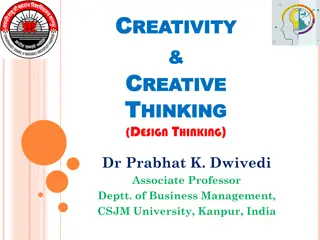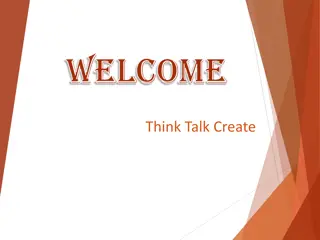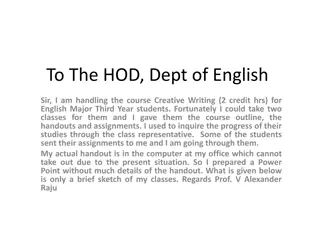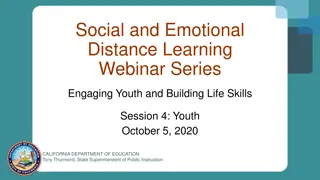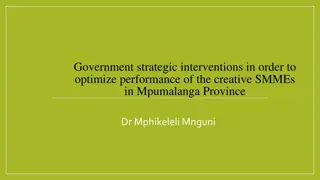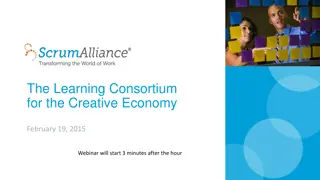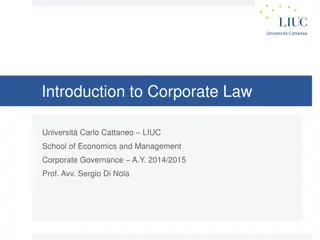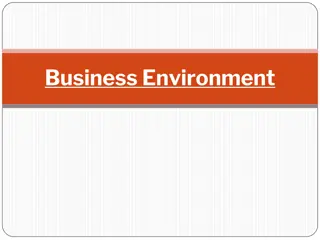Characteristics of a Creative Business Environment - Dr. Daniel Quaye, UGBS
Critical elements for fostering creativity in business include freedom, encouragement, and recognition. Dr. Daniel Quaye from UGBS discusses the importance of these factors in creating a culture of innovation. Identifying and seizing business opportunities, building innovative capability through leadership commitment and management proficiency, and addressing key skill gaps are essential for success in a dynamic business landscape.
Download Presentation

Please find below an Image/Link to download the presentation.
The content on the website is provided AS IS for your information and personal use only. It may not be sold, licensed, or shared on other websites without obtaining consent from the author.If you encounter any issues during the download, it is possible that the publisher has removed the file from their server.
You are allowed to download the files provided on this website for personal or commercial use, subject to the condition that they are used lawfully. All files are the property of their respective owners.
The content on the website is provided AS IS for your information and personal use only. It may not be sold, licensed, or shared on other websites without obtaining consent from the author.
E N D
Presentation Transcript
Lecturer: Dr. Daniel Quaye, UGBS Contact Information: danquaye@ug.edu.gh College of Education School of Continuing and Distance Education 2014/2015 2016/2017
1. Characteristics of a creative business environment a) Freedom The ability or opportunity to exercise some freedom in the business environment is critical to the creative process. The option for creativity grows not so much from freedom in what we do, but how we do our work. Slide 2 Dr. Daniel Quaye, UGBS
Cont. Characteristics b)Encouragement Management must provide encouragement for the development and exploration of ideas. A status quo mentality, or an inability to accept new ideas, will not promote an imaginative culture. Slide 3 Dr. Daniel Quaye, UGBS
Cont. characteristics c)Recognition Rewards or salary structures in which employees progress in orderly increments over a long period of time may generate loyalty rather than achievement. The challenge for businesses is to provide a range of measures and rewards such as peer recognition, different work opportunities, a better working environment and access to equipment. Slide 4 Dr. Daniel Quaye, UGBS
Identifying and Assessing business opportunities 3. d) Desire to achieve a creative culture - Must understand imagination and how it works. - Should ensure there are no non-examinable rules. - Offer opportunities for growth. Slide 5 Dr. Daniel Quaye, UGBS
2. Building innovative capability a) Ensuring the commitment of the leadership team The key to building an innovative business organisation is firstly to ensure the constant commitment of top management. Top management must ensure it is willing to be committed to the goal of becoming an innovative business unit. Slide 6 Dr. Daniel Quaye, UGBS
Cont. Building b)Ensuring adequate management capability It is important that the managerial leadership has enough horsepower to get the work done. Dr. Daniel Quaye, UGBS
Cont. Building c) Identifying key skill gaps Taking the time to understand and identify the gaps and how they can be filled is an essential part of top management s role. Slide 8 Dr. Daniel Quaye, UGBS
Barriers to Innovation a) Underestimating what is required It is not unusual for top management to underestimate the extent of the change needed to become an innovative enterprise and the adequacy of capabilities to achieve the task. Slide 9 Dr. Daniel Quaye, UGBS
Cont. Barriers b)The organisational web Businesses need to exhibit flexibility and adaptability in order to compete effectively. Slide 10 Dr. Daniel Quaye, UGBS
Cont. Barriers c)Identifying strands What is it that makes someone come to work? What is it that really excites and motivates the workers? Slide 11 Dr. Daniel Quaye, UGBS
Cont. Barriers d) Fear of failure One of the most significant reason why creativity is unrecognised is the fear of failure or the fear of an idea not living up to the complete promise. Slide 12 Dr. Daniel Quaye, UGBS
Cont. Barriers c) Inadequate resources for the change process Many businesses struggle to access resources. Moreover, good help rarely comes cheaply. Slide 13 Dr. Daniel Quaye, UGBS
Reading list Introduction of Business Administration Distance Education Manual- Dr Daniel Quaye. Madura, Jeff (2007), Introduction to Business Administration, South-Western College Slide 14 Dr. Richard Boateng, UGBS




